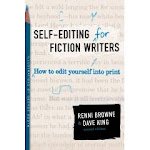Writing a powerful scene is a precise balance between what you say and what you don’t. The author has to provide enough detail to transport readers into the story, but not so much it clogs the flow of the story.
Let me give you an example using a movie I’m certain almost everyone’s familiar with—Jaws. Jaws was one of Steven Spielberg’s early movies and a lot hinged on its success. It was filmed in a time before CGI (computer generated images) so everything had to be filmed in real life.
Originally Mr. Spielberg planned to use a gigantic mechanical shark. He envisioned it providing the realism he thought the movie needed—slicing through the water, devouring swimmers and creating havoc. But one thing stood in the way, they film crew couldn't make the shark work.
The further they got into filming the worse things got, and the further behind schedule they lagged. Finally, the soon-to-be-great Steven Spielberg had to admit defeat—and come up with another way to make the movie—without the shark. He struggled, trying to determine how to add fear and terror without showing the audience the shark. It was then he hit on the answer, concentrate on the character’s reactions—physical and psychological—and let the shark be implied.
Well you and I both know the rest of the story, and it was arguably this movie that started his meteoric rise to success. Even today I can call to mind that iconic music and the terrifying opening scene. So what can we learn from this movie classic? Here are some things to remember when crafting a scene.
- Don’t name emotions – give your characters believable reactions and your readers will get it.
- Amp up the conflict – with powerful conflict comes heightened stakes. Your readers will get drawn deeper into the scene when they care about what happens.
- Don’t tell every detail – describe enough to let your reader feel they know where the characters are, but don’t be afraid to let your reader fill in some of the blanks. When the reader gets personally involved it becomes more real.
Paying attention to these three tips will help any scene get started on the right track.












As always, Edie, a great post. Those are great tips. I never knew that about Jaws. Cool stuff! Just shows, sometimes our difficulties lead to better ideas.
ReplyDeleteThanks Carla! I think you're right, often roadblocks lead to a better route.
ReplyDelete